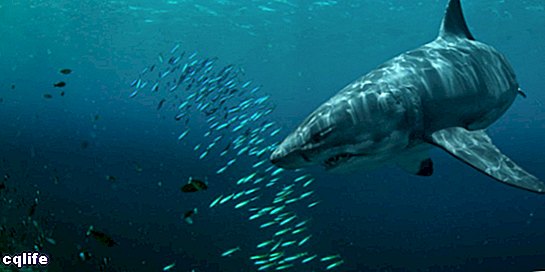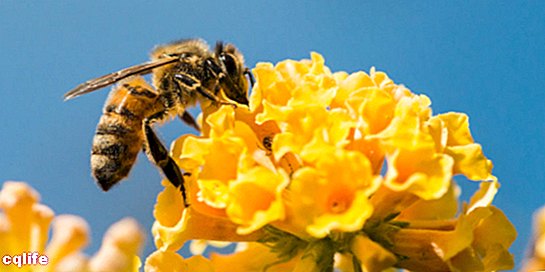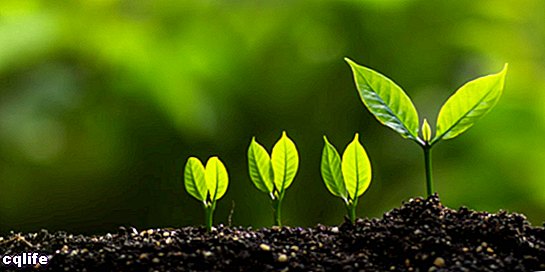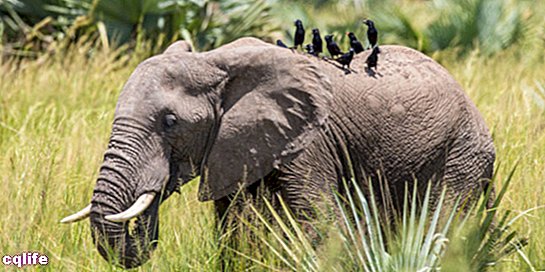- What is predation?
- Types of predation
- Examples of predation
- Competition and predation
- Other types of interspecific relationships
We explain what predation is, the types of predation that exist and examples. Also, what does the competition consist of?

What is predation?
Predation is a biological relationship in which an individual of one animal species hunts another to survive.
In this biological relationship, the predator or predator, who is the one who hunts, and the prey, who is the hunted, who transfers his energy to the hunter. Very few times this relationship occurs between two individuals of the same species. Furthermore, within the nature, it can happen that a predator is also prey to another species.
For example, if a lion hunts a zebra, the zebra would be the prey but, at the same time, it feeds on plants, so it is also a predator. This example also shows that predators are not necessarily carnivores.
Predatory species are characterized by having certain adaptations to be in a position to chase and capture prey. For example, they have certain olfactory organs that allow them to detect their prey, or they are excellent walkers.
At the same time, prey also develop certain adaptations to defend themselves. An example may be the spines or certain body coloration that allows them to camouflage themselves in the environment where they are.
Types of predation

In nature, different types of predation are identified, which are classified as follows:
- Competence. It is a relationship that occurs between individuals who require the same resource that is in finite or limited quantities, which leads them to compete with each other to get it. For example, when two birds compete for the same nesting space, a competitive relationship occurs. In this case, the relationship is intraspecific (between different species) because both are of the same species. But if, for example, two plants of different species compete for access to the sunlight, it is an interspecific relationship (between the same species).
- Parasitism. In this relationship, the predator has a much smaller volume than the prey and feeds on it without killing it (at least in the short term) because it needs its prey to stay alive to continue using it.
- Mutualism. In this kind of relationship, which is characterized by being temporary, the two individuals are benefited.
- Commensalism. In this relationship, one of the individuals (the predator) benefits, while the other (the prey), is not harmed or benefited.
- Herbivory. In this relationship, the prey is a plant.
Examples of predation
In nature you can see countless examples of predation, some of them are the following:
- Birds that eat insects and parasites that live on the back of horses.
- The lions that feed on buffalo and zebra.
- The tiger when hunting wild boar.
- The fish when they are hunted by lions.
- The bear when feeding on salmon.
- The wolf catching a moose.
- Jaguars when hunting deer.
- The fish that are hunted by seals.
- Frogs when feeding on flies.
- The mouse when it is stalked by a cat.
- The tiger at the time of preying wild boar.
- The gazelle when it is prey to a tiger.
- The worms preyed on tijones.
- Fish when prey for sharks.
Competition and predation

Competition is a type of predation, which can occur between individuals of the same species or not. This relationship consists of the competition of two or more individuals for certain limited resources. For example, in a flowerbed where there are numerous plants (of the same or different species), all of them will compete for sunlight, Water or the nutrients of the I usually.
The way of life of a species is called a niche, that is, the resources, interactions and conditions that it needs to stay alive. Therefore, when within oneself habitat there are two individuals who have the same niche, one of them does not survive and becomes extinct.
On the other hand, those individuals that have niches that partially overlap, can coexist and survive in the same habitat.
There are two kinds of competition:
- By exploitation. It happens when a species uses a resource in a more efficient way than the rest. This harms the rest of the individuals because the resource they need for their survival is available in few doses.
- By interference. In this case, an individual interferes in the way of gaining food and it does so through acts that put in risk the reproduction or the survival of the rest. For example, he acquires food aggressively.
Other types of interspecific relationships

Some examples of predation relationships that can occur between individuals of different species are the following:
- Tenancy. This relationship occurs when an individual takes refuge in the body of another, obtaining some benefit, while the individual who acts as a refuge is neither harmed nor benefited.
- Protocooperation. This relationship takes shape when two populations of individuals or two individuals mutually benefit.However, it is not an essential relationship for individuals to survive, they can do so even when this link does not occur.
- Symbiosis. It is a very intimate relationship, which is beneficial for at least one of its members.
- Exploitation. In this relationship, one of the members is harmed, while the other gets some kind of benefit.
- Foresia. In a relationship like this, one individual uses another without harming him, to use him as a means of transportation.
- Thanatocresis. In this relationship, an organism uses the remains of other dead individuals to benefit in some way.
- Epibiosis In this relationship, one of the individuals is harmless and inhabits the body of another. organism.
